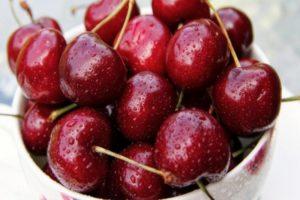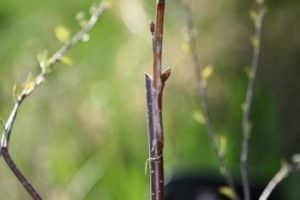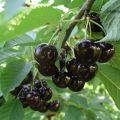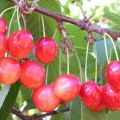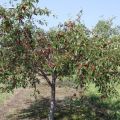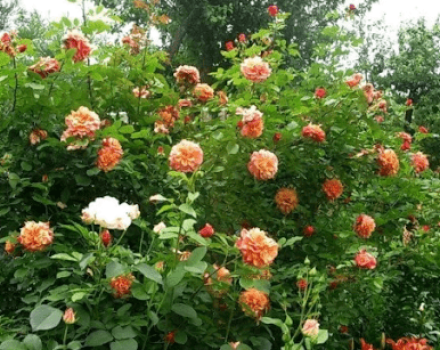Description of the cherry variety Fatezh, care and pollination, choice of planting site
The sweet cherry of the Fatezh variety was bred in 2001, especially for the middle lane. It was originally grown in the South, as the variety loves warmth and does not survive the winters well. Thanks to the efforts of breeders, measures were taken to zoning and crossing cherry species to breed new, more resistant hybrids. Fatezh takes root in the middle lane, brings a bountiful harvest with proper care. To plant a tree safely, you need to become familiar with all of its features.
Appearance and characteristics of Fatezh cherry
Before planting, you should familiarize yourself with the description of the cherry variety. Even an inexperienced gardener can grow a tree, since it does not need special care.
- Trees of the Fatezh cherry variety grow tall, in the absence of pruning - up to 8 meters. With regular crown formation, the height will be about 5 meters. This simplifies the process of harvesting, planting maintenance.
- Leaves are smooth, not tough, green in color. They keep on strong stalks.
- The tree is self-fertile and requires pollinators.
- High frost resistance, resistance to diseases and pests.
Sweet cherry Fatezh is suitable for cultivation in the country or industrial plantations for business.
Description of the tree
The trees have a spherical, medium-dense bush. As it grows older, it becomes more branched. Strong branches, covered with smooth brownish bark, branch off from the main stem at a smooth angle. Young shoots are brown in color, thick, short post - brown with a grayish undertone. The branches are covered with large, wide leaves with pointed ends.
Description of berries
The berries are large, the average weight is about 4.4 grams, round and one-dimensional. The peel is shiny, red-yellow in color. The fruit tastes like dessert, with a slight sourness. The variety was rated by tasters 4.7 points on a 5-point scale. The juicy pulp separates easily from the bone.
Ripening and harvesting terms
Flowering begins after 4-5 years of the life of the tree, ripening occurs at the end of June and mid-July. The variety is mid-season, ripening of berries is amicable. The separation from the fruit is dry.
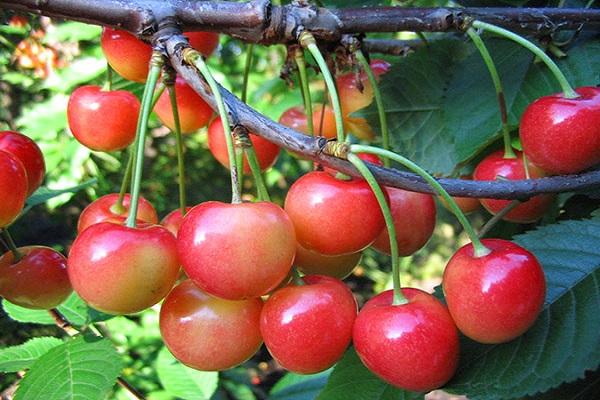
Yield
One tree gives about 5 kilograms of harvest. From the age of 10, cherries bring up to 30 kg of berries per season. The maximum variety bears fruit up to 50 kilograms of berries from one tree.
Using
Fatezh cherry fruits are eaten fresh, canned for the winter, frozen.Jam is made from berries, used as a filling for baking.
Shelf life and transportability
Sweet cherries tolerate transportation well and are stored in the refrigerator for about a week. It is better to pick the berries from the stalk, then they will last longer. During transportation, the fruits do not crumple.
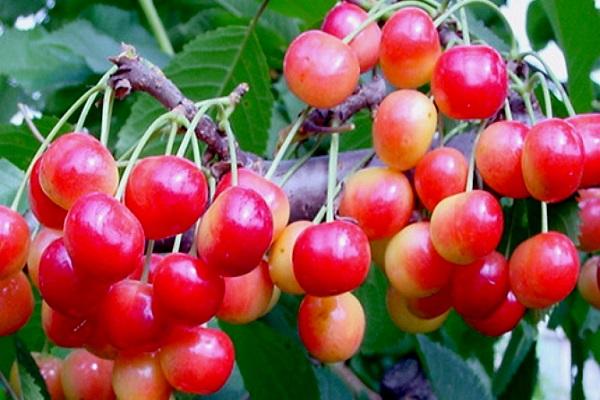
Main positive and negative aspects
The cherry variety Fatezh suggests a number of positive and negative aspects.
| pros | Minuses |
| High degree of resistance to frost, disease and pests | Self-fertile variety |
| Due to the height of the trees and the location of the branches, the harvesting process is easy | High vulnerability to gum flow |
| The taste is excellent | The distribution area is not wide |
| Abundant yield |
Planting and caring for a tree
The tree planting process is carried out using seedlings. The technology does not differ from planting other sweet cherries. Care includes standard aspects:
- timely watering;
- loosening;
- weeding;
- pest / disease treatment;
- fertilizer.
Only a young seedling requires special care. A mature tree needs virtually no maintenance.
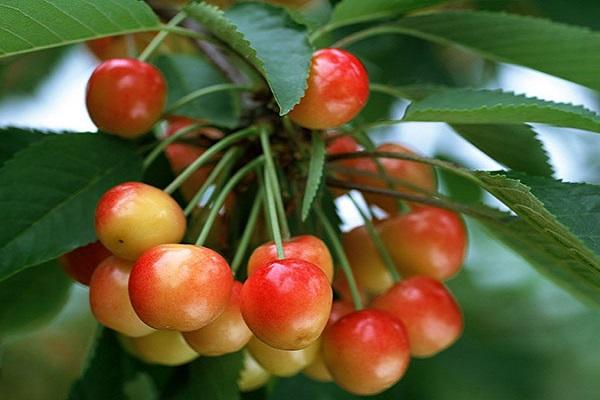
Site selection and lighting
In the Moscow region, it is recommended to plant cherries in the spring, since immature seedlings may not survive frost. In the South, a tree is planted in October, before frost. During this period, it will have time to take root in a new territory. The condition of the rhizome also affects the planting period. Seedlings with open roots may not take root only if they are planted in March, and plants in a peat container survive perfectly at any time.
It is better to plant a tree in April or early May when it comes to spring planting.
The variety prefers fertile soils, and requires a special location. Such territories are not suitable:
- clayey, heavy soils with close water occurrence;
- open areas with strong gusts of wind and drafts;
- slopes on the north side;
- darkened places;
- lowlands.
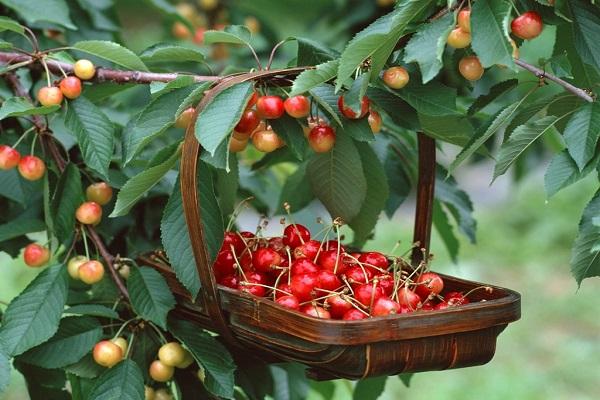
Places fenced from the winds and with good lighting are perfect - gardens, southern forest cannons, slopes. You can plant cherries along the house walls, but retreat at least 3 meters.
Soil for the Fatezh variety
Choose the soil that is easily drained, loamy. Its acidity should be at a neutral level, pH 6-7. The occurrence of waters is at least 2 meters deep. To achieve a bountiful harvest in spring, loosen the soil after planting so that the earth breathes oxygen. On wet lowlands, around the territory, it is advisable to dig grooves 60 centimeters deep. Through them, excess moisture will be removed from the site. The planting site of Fatezh cherries should not be covered with weeds, first, remove them.
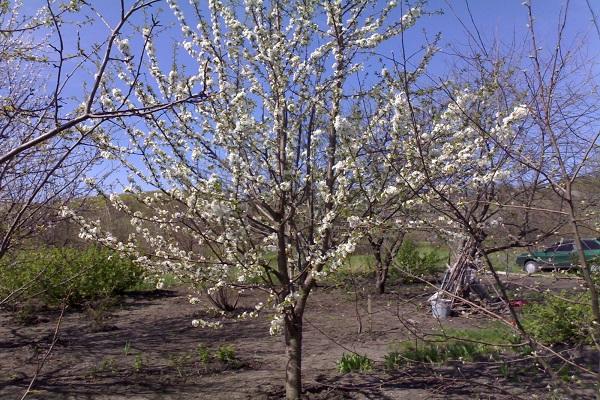
How to choose seedlings?
When selecting a seedling, first of all, pay attention to the vaccination and a number of other nuances:
- shoots must be clean, straight, without damage;
- you should not take seedlings that have a lot of foliage and shoots, since they will not take root well in a new place;
- give preference to annual plants, examining the place of budding (at a height of 15-20 cm from the root, the trunk should be slightly bent);
- seedling height - 0.8-1 meter, rhizome length - 0.2-0.25 centimeters;
- shoots should be 4-5, trunk thickness - 2-2.5 cm.
You should not buy seedlings in the market from dubious sellers. They may sell the wrong species, or the wild one. Make a purchase in nurseries with a good rating in the fall.
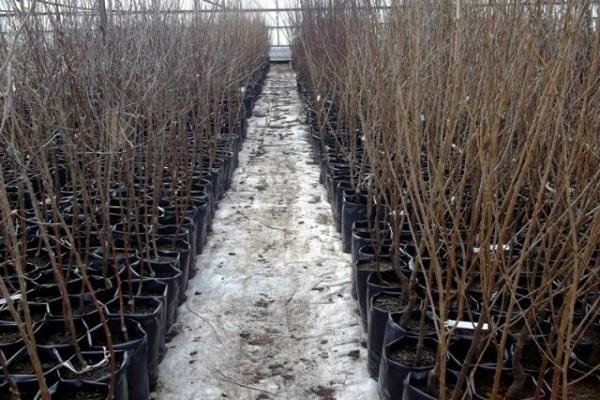
Landing technology
The peculiarities of planting Fatezh cherries are associated with climatic conditions. This variety is zoned for the middle lane or the southern region. In Siberia, the species rarely takes root. It is better to prepare the landing hole in the fall.
- The well is cubic in shape, 70 centimeters on each side.
- When planting several trees, maintain a distance of 3-4 meters between them.
- Near each hole, place a tether stake.
- Mix the excavated recess with 3 buckets of humus, 1 liter of wood ash.
- Before planting, gently spread the rhizome. His neck should be 3-4 centimeters above the ground.
- Cover the seedling in layers, gradually compacting the soil.
- Pour 3 buckets of water slowly.
- When the liquid is absorbed, mulch the soil with humus around the shoot, then tie it to a stick.
With strict adherence to the rules, Fatezh cherries will take root without problems. In the second year, in the near-barrel zone, make a circle with a diameter of 1 meter. Dig up the earth, clearing the place of weeds. Once every 3 years, expand the near-stem zone by 0.3 meters, mulch the ground. Experienced summer residents are advised to sow honey plants around. They attract bees and prevent weeds from growing. These plants include mustard, clover, phacelia.
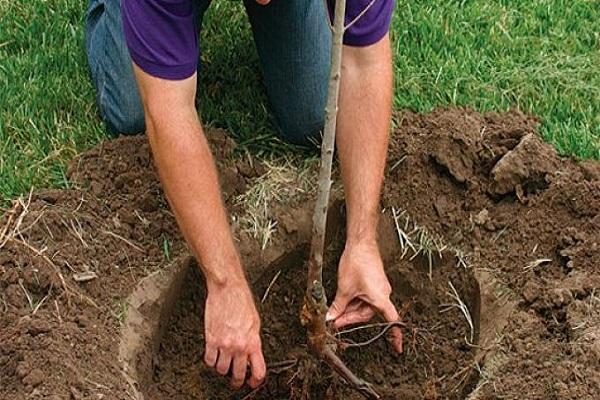
Weeding and loosening
After rain and watering, loosen the soil with a cultivator or other garden tools. Due to this, cherries better absorb moisture and fertilizers. Weed the soil regularly to remove weeds. You can reduce the amount of weeding by mulching with straw and humus.
Watering
Water the cherries 3-4 times during the growing season, depending on the weather. Irrigation occurs after flowering, berry picking and in early August. Before watering, loosen the ground, remove weeds, add top dressing. On average, 1 tree requires up to 6 buckets of water.
Top dressing
Cherry variety Fatezh, like its other varieties, love feeding 2 times a year. If the plant is planted in black soil, it can be fertilized less, since the soil already contains a large amount of useful trace elements. Loamy soils are best fertilized in March or November, using the following dressings:
- horse manure;
- humus;
- compost.
In November, you should not fertilize the soil around the cherries with nitrogenous and potassium fertilizers, and you should also not water abundantly.
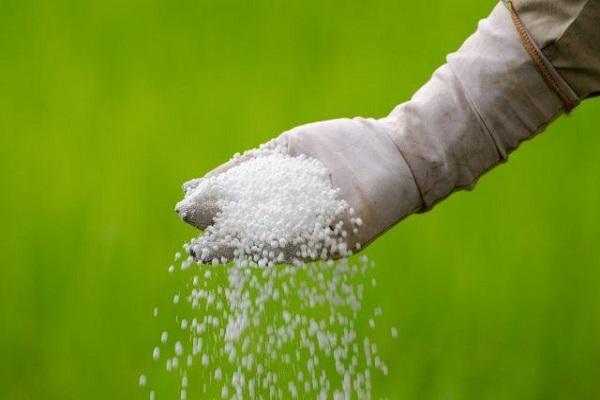
Regular pruning
At a young age, cherries should be pruned every year. The procedure is carried out in the spring, until the kidneys swell. Shorten annual shoots by 1/5 of their length. Trim the top of the trunk by 30 centimeters so that the tree grows more compact and shorter. It is also important to remove dried, broken branches, carefully process the cut sites with garden pitch.
Shelter for the winter
Before cold weather, cherries should be covered, especially young ones. Then the buds and fruiting branches will be preserved on the tree; no strong pruning of the crown in spring is required. If the bark cracks under the influence of frost, infections will develop in it. Oxygen must pass through the shield. Do not cover the neck of the rhizome with manure.
You need to cover the tree at a temperature of up to 2 degrees Celsius, and not more than 0. To create a frame, use a wire or slats made of wood, stretch a spunbond or agrospan over it. It is undesirable to use a film because oxygen does not pass through it. The frame is fixed at its beginning with bricks, and from above it is tied with a rope. In March, after the snow melts, the shelter is removed.
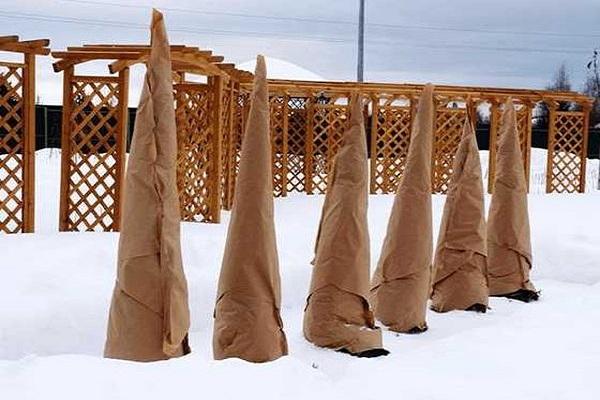
Cherry pollinators Fatezh
The Fatezh variety is self-sterile. To have a lot of harvest in the future, plant other cherries nearby:
- Iput;
- Crimean;
- Raditsa;
- Ovstuzhenka;
- Jealous;
- Chermashnaya.
Due to their pollen, flowers will set.
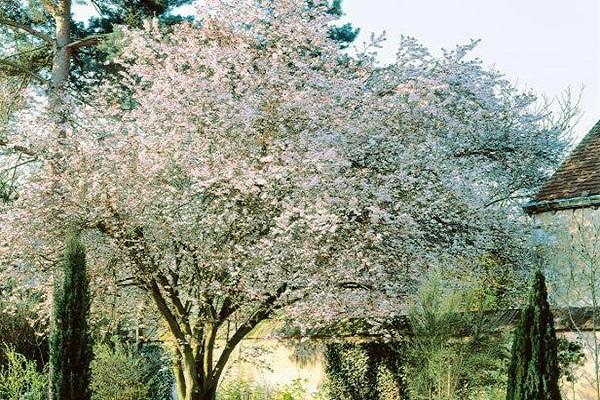
Pest and disease control
The variety is resistant against fungal infections, coccomycosis and moniliosis. The plant is attacked by aphids, fruit mites, moths.
- Mites are eliminated with Karbofos in a ratio of 2 grams per 10 liters.
- Aphids are destroyed by sprinkling the tree with soapy water. Take 300 grams of grated laundry soap and a bucket of water. Sanitize the plant 3 times every other day.
- For beetles, the tree is sprayed with "Inta-Vir" in a proportion of 2 grams per 10 liters.
When grown according to the rules, the tree is not afraid of gum treatment.
